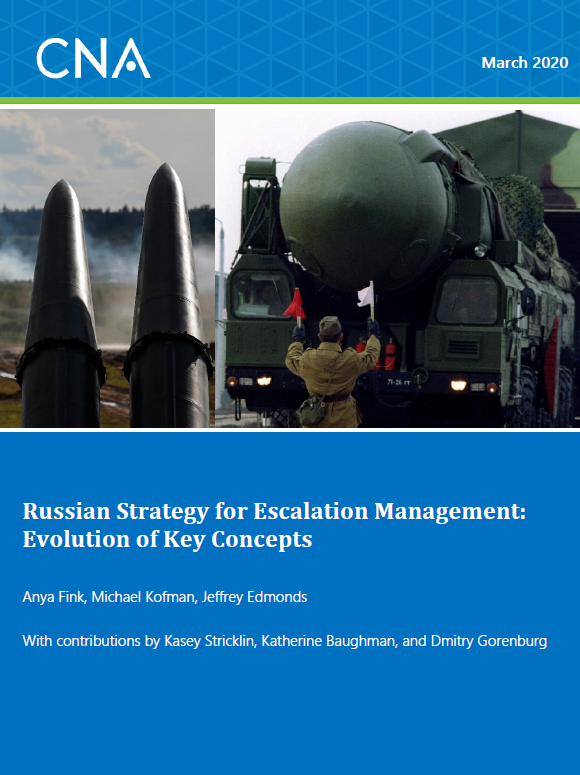In the 1990s, the Russian military debated the ways and means by which to carry out deterrence at different levels of conflict, while faced with a limited toolkit and largely dependent on nuclear weapons. Over time they came to consider deterrence levels, damage types, and the specific political and military measures that could be applied to deter adversaries or manage escalation. These concepts became part of military strategy, and ventually came to be codified in national security concepts in the first decade of the 2000s. After periods of reform and military modernization, the toolkit or means that Russian military strategists envisioned also came to evolve, as did their thinking on the mix of nuclear and nonnuclear means in deterrence. A reasonably mature system of deterrence emerged as the product of decades of debates and concept development, designed to handle the spectrum of Russian security requirements, from peacetime through nuclear war.
Russian military thinkers have articulated a system that some describe as consisting of deterrence by intimidation or fear inducement, deterrence through limited use of force, and deterrence by defense. Russian military thought tends to characterize these types of activities as demonstrative, damage inflicting, and retaliatory. This study focuses on the first two: demonstrative measures intended to manage escalation during the crisis phase, and various approaches to inflicting damage that Russian military thinkers believe will manage an escalating conflict, or result in de-escalation.
The overarching concept for this system at the national level is called “strategic deterrence.” It is a holistic Russian national security concept for managing escalation, and containing adversaries in peacetime, by integrating military and nonmilitary means. As a theory of escalation management and war termination, strategic deterrence approaches communicate to a would-be opponent that the Russian military can inflict progressively higher costs while lowering their expected gains in a conflict. These actions signal to the opponent’s leadership and populations the need to forgo aggression, de-escalate hostilities, and/or terminate the conflict. The strategy suggests that the Russian military, as a strategic culture, has a strong predilection for cost imposition (rather than denial of benefits) in thinking about deterrence and that the operating mechanism is calibrated escalation.
The effects considered are achieved through the coordination of military and nonmilitary means. Nonmilitary instruments are essential for containment, but military or forceful measures predominate in deterrence tasks, concepts rely primarily on the forceful end of the spectrum. Military measures consist of demonstrations of military presence and military power, raising readiness to wartime levels, deploying forces, threatening to deliver strikes (with conventional or nuclear weapons), and conducting single or grouped strikes (with
conventional or nuclear weapons). Such measures could be employed in a threatened period to prevent aggression, and in wartime to manage escalation, or end the war.
DISTRIBUTION STATEMENT A. Approved for public release: distribution unlimited.
Cleared for Public Release.
This work was performed under Federal Government Contract No. N00014-16-D-5003
Details
- Pages: 94
- Document Number: DRM-2019-U-022455-1Rev
- Publication Date: 4/13/2020
